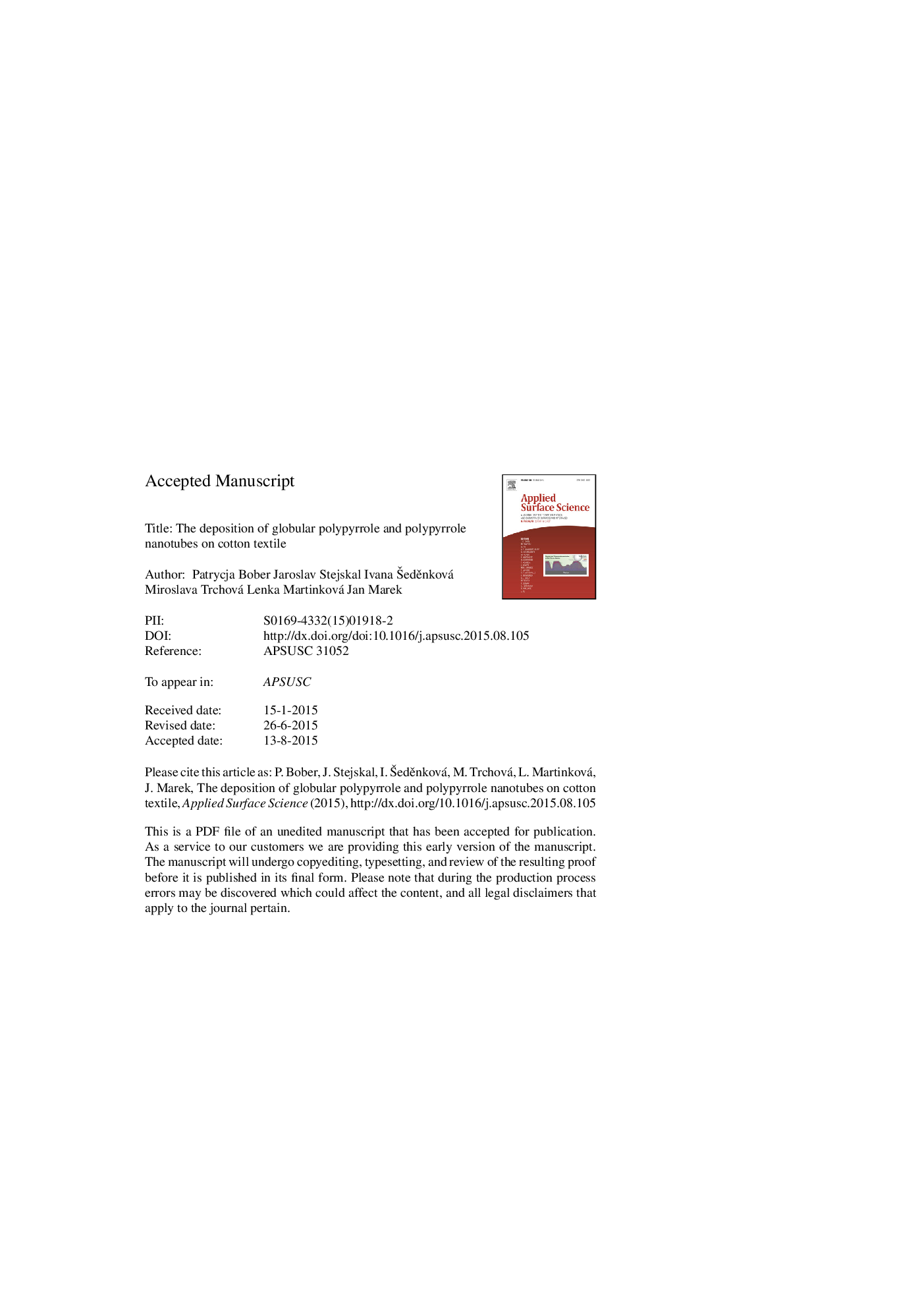| Article ID | Journal | Published Year | Pages | File Type |
|---|---|---|---|---|
| 5348983 | Applied Surface Science | 2015 | 19 Pages |
Abstract
Cotton textile was coated with polypyrrole in situ during the oxidation of pyrrole with iron(III) chloride in aqueous medium. Such polymerization results in the globular polypyrrole coating of fibres. In the presence of methyl orange, the coating with polypyrrole nanotubes was obtained. Nanotubular polypyrrole is more conducting and more stable towards the loss of conductivity after deprotonation than globular form. On the contrary, when deposited on cotton, the surface conductivity with the globular form was higher and stability with respect to washing better. This is due to the fact, that the coating with globular form is considerably thicker compared with the deposited nanotubes. This is visible by the difference in colour, black and brown for the globular and nanotubular forms, respectively, and also confirmed by infrared and Raman spectroscopies. The reduction in conductivity after repeated washing is large and the textile becomes practically non-conducting for both polypyrrole forms. The repeated chemical cleaning of the textile with globular polypyrrole coating, however, is associated only with the marginal decrease in conductivity.
Related Topics
Physical Sciences and Engineering
Chemistry
Physical and Theoretical Chemistry
Authors
Patrycja Bober, Jaroslav Stejskal, Ivana Å edÄnková, Miroslava Trchová, Lenka Martinková, Jan Marek,
